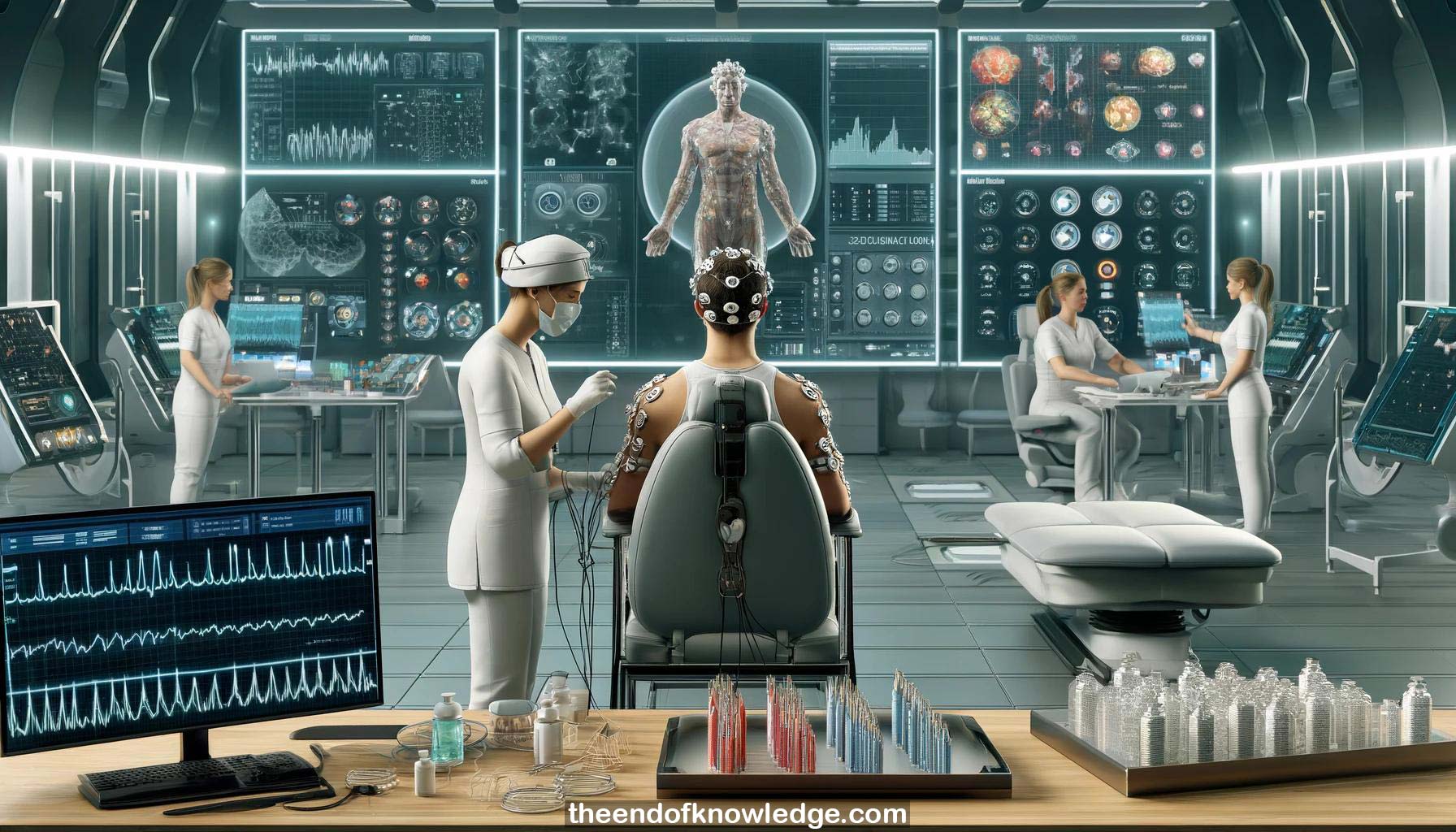 >
>
Concept Graph & Resume using Claude 3 Opus | Chat GPT4 | Llama 3:
Resume:
1.- The recovery system includes an EEG cap, functional electrical stimulators, and software. The patient sits looking at a monitor displaying an avatar.
2.- 16 EEG electrodes are placed over the motor cortex. Functional electrical stimulators deliver stimulation to the forearms.
3.- The EEG cap must be placed correctly, not rotated. Electrodes require conductive gel, about 2-2.5mL total for the 16 electrodes.
4.- Placing the functional electrical stimulator electrodes can be tricky at first. They should be over the muscle belly to avoid pain.
5.- Stimulation is delivered at 50Hz frequency. Amplitude is increased slowly for each patient until a nice hand opening movement is seen.
6.- If electrodes are placed too medially, finger flexion rather than extension occurs. Electrodes may need to be repositioned.
7.- Patients should not feel pain during stimulation. Finding the right threshold can be tricky at first but gets easier with experience.
8.- Each motor imagery task lasts 8 seconds. After a 2 second cue, the patient imagines the movement for the remaining time.
9.- Explaining motor imagery to patients who lost limb function can be challenging. Imagining reaching for an object overhead can help.
10.- Patient concentration is critical, accounting for over 50% of therapy success. Feedback only occurs if motor imagery is performed.
11.- Patient motivation often declines over time in rehabilitation. The recovery system's technology can remotivate patients.
12.- Instructions should be provided every session, regardless of patient progress. Pause times can be used to remotivate the patient.
13.- Sessions include 3 runs of 80 trials each (40 left, 40 right). The first run calibrates the system to brain changes.
14.- In calibration mode, feedback is provided regardless of performance. Training mode only provides feedback if motor imagery is done well.
15.- 240 total motor imagery trials are performed per session (120 left, 120 right) in randomized order. Sessions last about 45 minutes.
16.- The system provides a motor imagery accuracy percentage after each session indicating how well the patient can control left vs right.
17.- This motor learning process teaches patients to reactivate the motor cortex. Accuracy is expected to improve over the 25 sessions.
18.- The software has a patient selection screen and main screen showing ERD/ERS plots, CSP plots, and real-time accuracy.
19.- 16 EEG lines are shown. Electrode signal quality is indicated by color. ERD/ERS maps show motor cortex activation.
20.- Parameters like frequency (50Hz), pulse width (300ms for upper, 400ms for lower limbs), and current are set for each patient.
21.- Setup involves selecting the patient, adjusting parameters, applying EEG cap electrodes in a standard order, and testing the EEG signal.
22.- Signal quality is checked by having the patient close eyes (alpha waves appear) and move mouth (artifacts seen).
23.- Once signal is stable, the session can begin. The system provides auditory and visual cues for left/right motor imagery.
24.- During calibration, the avatar moves regardless of performance. In training, avatar movement depends on successfully performing motor imagery.
25.- Analyzing ERD/ERS plots shows if the patient is activating the correct motor cortex during left/right imagery.
26.- The therapist should remain quiet and still during the session to avoid disturbing the patient and introducing EEG artifacts.
27.- If stimulation feels too weak, the intensity can be increased between runs.
28.- In training mode, the patient should concentrate on imagining the movement and let the stimulation activate their muscles.
29.- Lack of concentration results in no feedback being provided, as the system can detect if motor imagery is being performed.
30.- Motor imagery accuracy improves over sessions as the classifier becomes more precise with additional data.
Knowledge Vault built byDavid Vivancos 2024